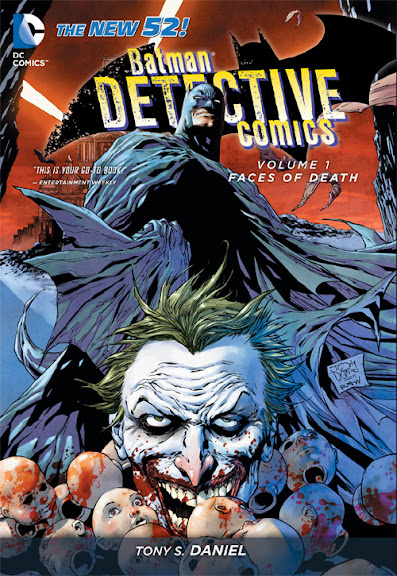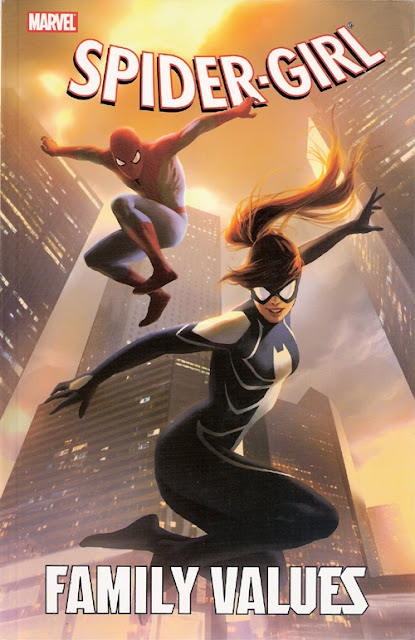Alpha Flight: The Complete Series by Pak and Van Lente
Collects: Alpha Flight #0.1, 1-8 (2011-2)
Released: May 2012 (Marvel)
Format: 208 pages / color / $29.99 / ISBN: 9780785162834
What is this?: The original Alpha Flight team is back, battling a government seemingly gone mad and a traitor from within.
The culprits: Writers Greg Pak and Fred Van Lente and artists Dale Eaglesham and Ben Oliver
I wanted to like Alpha Flight: The Complete Series. I like Alpha Flight, as a team. The writers, Greg Pak and Fred Van Lente, have produced books I’ve liked, such as their Incredible Hercules run. And in this series, Pak and Van Lente reunite Alpha Flight’s classic lineup in its own book for the first time since the John Byrne run.
But it’s tough to recreate greatness a quarter century on. The characters, creators, and readership have all changed. The title changed a great deal after Byrne left, with writers such as Bill Mantlo, James Hudnall, and Simon Furman guiding Alpha Flight for more than 100 issues. After the original series ended, Alpha Flight was relaunched twice: a Steven Seagle / Duncan Rouleau conspiracy story and a critically lambasted Scott Lobdell run. What “Alpha Flight” means changed, so much so we forget the original lineup existed for single issue. Characters have been killed, brought back to life, and killed again. In fact, the last time I checked, everyone starring in this book was dead. Marrina had been dead for decades, killed in Avengers in 1986. Northstar was killed by Wolverine as cheap carnage in 2005’s Enemy of the State. The rest died between panels because Brian Bendis said so.
 Unfortunately, there’s no explanation of how Guardian, Vindicator, Sasquatch, Shaman, or Marrina came back to life. (Puck says he escaped from Hell, which at least acknowledges that he died.) Maybe it has something to do with the Fear Itself crossover, which manifests itself in this book as people running around with anime-sized hammers. A little research reveals the Chaos War storyline allowed the team to return, but The Complete Series doesn’t explain the link or mention either crossover. And even invoking Chaos War doesn’t explain how dead liaison / traitor Gary Cody had time to build a political career. And hey — did you know Guardian and Vindicator had a kid? It’s true! And they lost custody to Heather’s cousin? Also — apparently — true. Is it too much to ask for footnotes so I know Pak and Van Lente have created and what they have been saddled with? I don’t think so. Footnotes are your friend. They’re everyone’s friend, and I missed them very much in The Complete Series.
Unfortunately, there’s no explanation of how Guardian, Vindicator, Sasquatch, Shaman, or Marrina came back to life. (Puck says he escaped from Hell, which at least acknowledges that he died.) Maybe it has something to do with the Fear Itself crossover, which manifests itself in this book as people running around with anime-sized hammers. A little research reveals the Chaos War storyline allowed the team to return, but The Complete Series doesn’t explain the link or mention either crossover. And even invoking Chaos War doesn’t explain how dead liaison / traitor Gary Cody had time to build a political career. And hey — did you know Guardian and Vindicator had a kid? It’s true! And they lost custody to Heather’s cousin? Also — apparently — true. Is it too much to ask for footnotes so I know Pak and Van Lente have created and what they have been saddled with? I don’t think so. Footnotes are your friend. They’re everyone’s friend, and I missed them very much in The Complete Series.Pak and Van Lente mix the old with the new, which sounds like a good idea but is troublesome in practice. Alpha Flight’s arbitrariness is the main problem with the series. The characters seem to return from the dead for no reason, their personalities plucked from someplace in their histories. The writers have brought some characters back to their roots, regressing them. Sasquatch flirts with Aurora, who still battles her multiple personalities. Despite years with Alpha Flight and time with the X-Men, Northstar is still not a joiner. Puck is still exuberant, although he’s a bit mad now. Snowbird is still slightly imperious and slightly distant, and Shaman is still Shaman. But Marrina is recast into a violent, moody teenager coming to grips with her alien nature. Sasquatch loses his powers, and when he reacquires them, he has a Hulk-like personality. The Purple Girl has grown into the Purple Woman, taken fashion cues from Carmen Sandiego, and become a terrorist.
This mix of progression and regression is bothersome. Aurora, Northstar, and Sasquatch have lost years of development by returning to their factory-new states. It feels like the writers are casting around for a hook for these characters and settling on what’s been done before. Marrina’s new personality is a distraction. As a new character, she might have been entertaining; however, the contrast with who she was is jarring, especially since readers did not see the transition between personalities. And Shaman and Snowbird are both characters who should have something to say to Guardian about the loss of a child, but neither do; this seems less a lost opportunity and more of Van Lente and Pak casting aside or forgetting who Shaman and Snowbird are.
The villains’ plot — which involves mind control — does not help matters, especially given how extreme some of the actions Vindicator takes while controlled are. Aurora, switching between personalities and loyalties on a whim, exemplifies the lack of a core these characters have. Even the familiar characters feel off. Characters can only be remolded so much before they lose the shapes we liked, and I think that’s the case here.
The plot, which involves a Canadian government being controlled by the Master of the World, doesn’t feel like an Alpha Flight plot. Or — to be more accurate — if feels like a generic superhero plot that was roughly customized for Alpha Flight. The government takeover feels too over the top, with mass arrests of the opposition party and the press stretching credibility. The Master is an excellent choice for a foe, but he rarely feels engaged with the heroes, and his end goal — creating a race of humans who will conquer the universe — is power mad but delightfully without a point. Why conquer the universe? You might as well ask why he’s using a Wendigo as an operative. Because it’s something to do, I suppose; it’s always tough to keep busy when you’re immortal.
I enjoyed Dale Eaglesham’s art. It is attractive, and the characters are expressive without comically mugging. His illustration of the Master’s origins, drawn in a child’s style to convey that it is being told to Vindicator and Guardian’s daughter, is especially endearing. I’m not wild about Marrina’s new and occasionally mutating costume, but it’s not like her old costume — a one-piece swimsuit — was worth saving. I’m less enamored of Ben Oliver’s work on #0.1, although that may be the colorist’s fault — the painted-style colors makes everything look flat.
It’s ironic that Pak and Van Lente’s back-to-basics approach gives Alpha Flight an unsettling unfamiliarity. But the writers’ blithe attempts to take the team back to its beginnings leaves me at a loss; are these the characters I’ve enjoyed reading about? By the end I have to say no, even if they have the same names and appearances.
Rating:

 (1.5 of 5)
(1.5 of 5)Labels: 1.5, 2012 May, Alpha Flight, Ben Oliver, Canada, Dale Eaglesham, Fred van Lente, Greg Pak, Marvel, Ottawa, Vancouver






